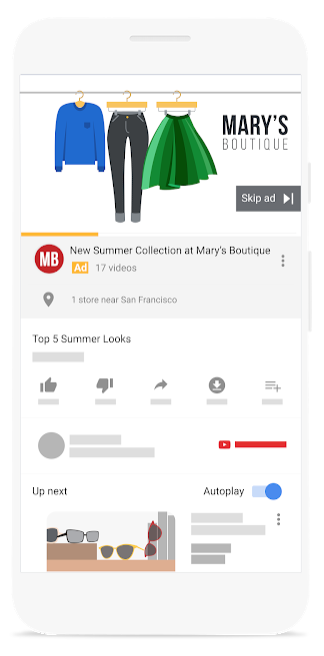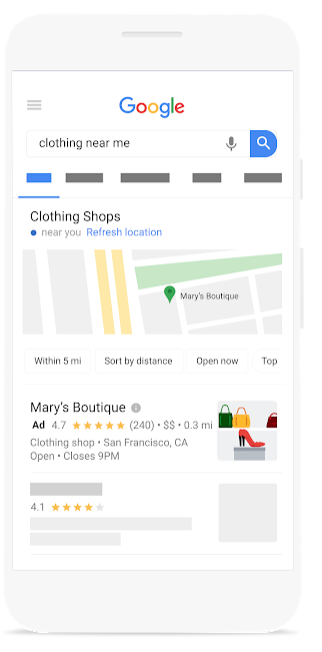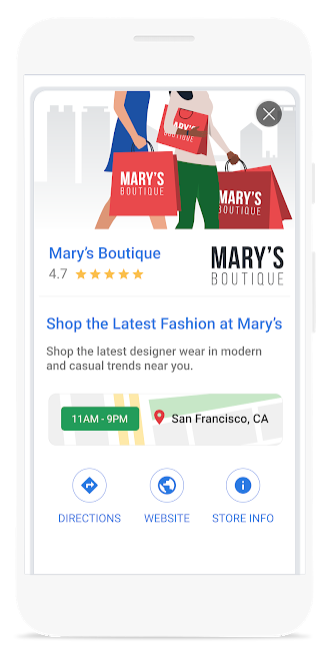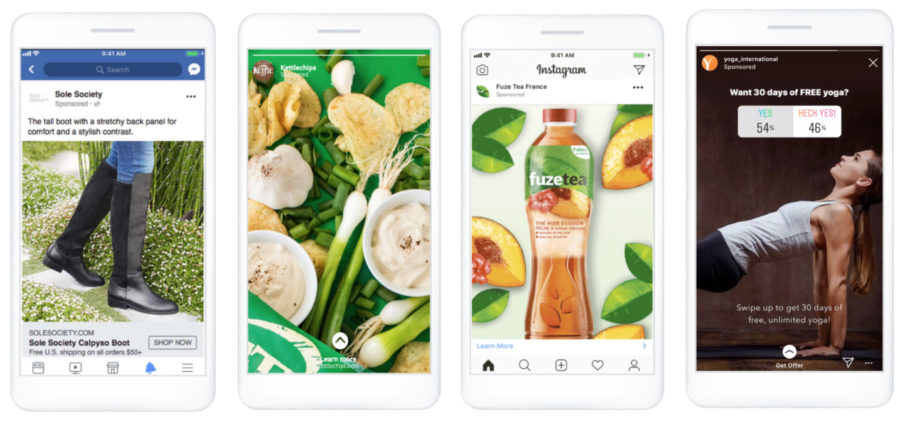“Local Ads ” and ” Local Campaigns ” are extremely powerful ways for retail networks to advertise. These marketing strategies allow physical stores to promote their products or services in a specified geographic area surrounding the brand. The magic of this is that an advertisement will be published on digital platforms at the perfect time: when the potential customer is nearby and looking for the types of services / products that your brand offers.
In this post, we’ll cover:
- What are Local Ads?
- The Role of Local Ads
- Tools for Local Ads
- Mistakes to avoid in Local Campaigns
- The indicators to follow for a good Local Ads Campaign
1. What are Local Ads?
A Local Ad is the digital promotion of your store in the specific geographic area surrounding it. Our software ensures that the most critical information (name, address, hours of operation, services, phone number, images, etc.) for your brand is automatically displayed on the digital platforms of your potential customers located nearby.
The goal is to attract the customer to the location. This strategy is called “online-to-offline” or O2O and consists of optimizing the online visibility of your locations on major media channels, to encourage in-store visits (for more information, see our article on the subject ). To do this, brands must create Local Pages for each of their physical stores, for example, creating a Facebook and Google My Business page. With these pages, it is then possible to create advertising campaigns linked to them.
A Local Ad is very useful in reaching potential customers because it increases the online visibility of the location. Reaching new customers is usually complicated. That’s why it makes sense to be on all the major digital platforms like Facebook and Google. By doing this we can ensure that a prospect will automatically associate the name of the brand with the specific product or service for which they are searching.
A Local Ad campaign therefore makes it possible to increase revenue by maximizing visits to your store.
2. The Role of Local Ads
It is important to understand that retail chains are made up of distinct levels: the headquarters (HQ), which represents the entire name of the brand and locations or branches, which represents all of the physical stores bearing the name of the brand. These entities obviously both have roles in setting up local campaigns.
- The headquarters has the role of creating all the advertising campaigns which are posted centrally or by each location. This ensures that all the campaigns remain consistent and correspond to brand guidelines. To do this, it is advisable that the headquarters makes available a library of pre-formatted advertisements that locations can then easily use to launch a campaign. HQs may also have the role of reporting on campaigns for the locations.
- The location has the role of posting local advertising campaigns for all the relevant communications about their specific branch or franchise. For example, a store can communicate promotions, new products, in-store events or collaborations specific to their store. Each location must be careful that all of its communications align with the image of the brand it represents. In addition, it must ensure that this communication does not interfere with that of another location in the same network.
3. Tools for Local Ads
There are several search engines and platforms that allow you to create Local Ads like Google, Facebook, Microsoft Bing and others. The most relevant tools by their volume of users for retail networks are:
Three Google products will be used in setting up a local campaign: Google Search , Google Maps and Google Display. These tools will direct the prospect to the Google Maps interface and the Google My Business (GMB) form for the point of sale. This is so that all information on each store location is provided, to encourage people to visit the store. These tools also make it possible to adjust the ad bids according to the customer’s distance from the location. The main thing in these tools is to have the most complete and up-to-date GMB form possible. For more information, see our article “The benefits of local Google campaigns”



Facebook is an extremely powerful tool for local campaign creation. This platform offers the possibility of creating advertisements in different formats with high-precision audience targeting. Due to the nature of the platform, Facebook has managed to collect a very large amount of user data that empowers companies to target interests effectively. This makes it very useful for companies who are familiar with the profile of their customers (persona). For more information, see our article “ What are the benefits of Facebook ads for a retail network? ”

4. Mistakes to avoid in Local Ads Campaigns
Due to the separation of roles around local campaigns, it is sometimes difficult to manage all communications. The more the number of stores increases, the more it is necessary to communicate between entities to avoid “stepping on each other”. The risk is that the headquarters communicates a general campaign and that it competes with the individual location’s campaign. We speak of the “ cannibalization ” of campaigns.
The phenomenon is trickier for companies with a separation between their national headquarters and regional headquarters. In addition to the campaigns of the location and the regional headquarters, it will also be necessary to take into account those launched by the national headquarters.
In the event of cannibalization, the location will lose money because the local, targeted, campaign becomes ineffective. ALSO, the cost of the campaign will increase, you will end up with a strong competition between local and headquarters for parallel advertising bids and the cost of publishing will increase if the head office(s) and the locations are competing for bids on the same keywords and ad placements.
To avoid this situation, several things must be done:
- Make sure you have good communication between the head office(s) and the locations. It is necessary to define the messages that will be carried by each one, beforehand. The use of a campaign calendar for these different messages allows good synchronization between entities.
- Use the geo-location capabilities of the different platforms to create “geo-tagged areas”. It is possible on the platform to exclude geographical areas where the campaign will not post. The campaigns will therefore be mutually exclusive from one another.
5. The indicators to follow for a good Local Ads Campaign
In each campaign, it is obviously important to measure the results in order to understand the impact of the actions and work on continuous improvement.
These are the basic indicators:
- Impressions: indicates the number of times the result appears on a page for a specific keyword.
- Clicks: Indicates the number of times the ad was clicked.
- CPC or “cost per click”: indicates the average cost per click on a local ad. The platforms offer CPC automation to optimize this cost. There is for example the option on Google to put the CPC in “enhanced” mode.
- CTR or “click through rate”: indicates the percentage of people who have seen the ad versus the number of clicks on it.
- CPM (occasionally CPT) or “cost per thousand”: simply indicates the average cost per 1000 impressions.
Regarding the specialized indicators for locations, the tools are different for each platform. For Google there is the possibility of using Store Visits and Store Sales which are particularly useful tools for “ROPO” or “Online to Offline” strategy reporting (for more information, see our article “What is ROPO traffic? ”). With regard to Facebook, campaigns have the strategy of “local traffic”, analytics will give all figures more closely related to a physical location.
We suggest experimenting with your campaigns. The format, the visual, the budget and other variables will have a significant impact on the results. In addition, it all depends on the purpose. Experimentation will identify what is best for your network of retailers.
Any questions?